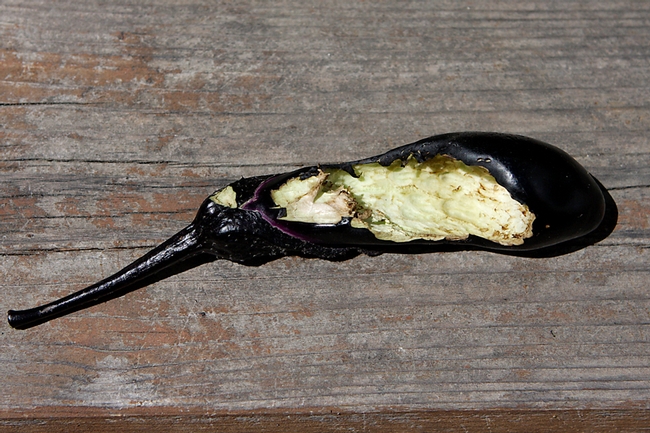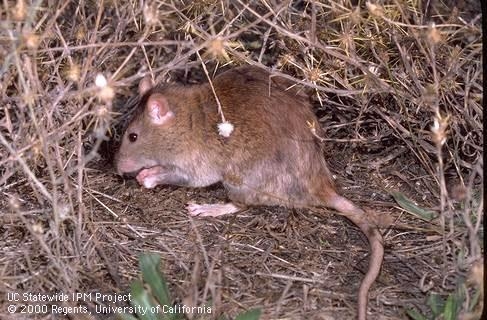OH, rats!
When I was a kid, I had a pet rat. The offspring of “Rat Olympics” medal winning parents, she was friendly and athletic. A smart rat, I trained her to perform several tricks. She was a domesticated rat and my pet. The wild rats that have been using our vegetable garden as their cafeteria, are pests.
There are many public health issues associated with wild rodents and any pest problem is best dealt with early, before it gets out of control. The two most common rat species in California are the Norway rat (Rattus norvegicus) and the roof rat (R. rattus). Sanitation, rat proofing, and population control are the three main aspects of managing a rat problem.
The first sign of my rat problem was early in spring: vanishing bok choy (Brassica rapa chinensis). The outer leaves of the young leafy clusters were disappearing one by one over the course of a few nights. The amount of damage could not have been caused by insects and no evidence of slugs or snails was visible. Since they are active at night, I suspected rats. I constructed 24-inch tall cylinders of hardware cloth to protect the plants. After a few nights of experimenting with methods for securing the cylinders to the ground, the leaves remained undamaged. Hungry rats will find a way around obstacles, so I buried the hardware cloth about an inch deep and used garden staples to hold it in place. The bok choy was now rat proofed.
There are many methods of population control of rats. I feel badly about it, but let’s be honest, we are talking about killing rats. Using live traps is an option, but Norway and black rats are not native to California and releasing them in the wild could be harmful to the native plants and animals.
Things to consider when choosing a control method:
Rodent baits contain poisons that are also toxic to pets, wildlife, and humans. It may take several days for the poison to work allowing the rat (or mouse) the opportunity to find an inconvenient place to die like inside a wall or under a deck. The carcass may still contain active poison that could be harmful to cats, dogs, or wildlife that might consume it.
Glue or sticky traps are usually ineffective and rats can drag them around as they struggle to escape. Glue traps can be dangerous for wildlife such as birds and reptiles, and small mammals like kittens.
Trapping with a spring type trap is recommended by UC IPM as the most effective. It may be labor intensive, but it works. Over the summer, we controlled more than twenty rats in our garden. We religiously set the traps in the evening and unset any unused traps in the morning. Why not leave traps out all the time? Dogs, cats, and wild birds looking for food could be injured by the traps, and that is definitely not the intention.
For more information on managing rats, including trap setting strategies, visit the UC IPM website for Pest Note number 74106 http://www.ipm.ucdavis.edu/PMG/PESTNOTES/pn74106.html




Posted by Donna J. Seslar on October 9, 2011 at 3:10 PM